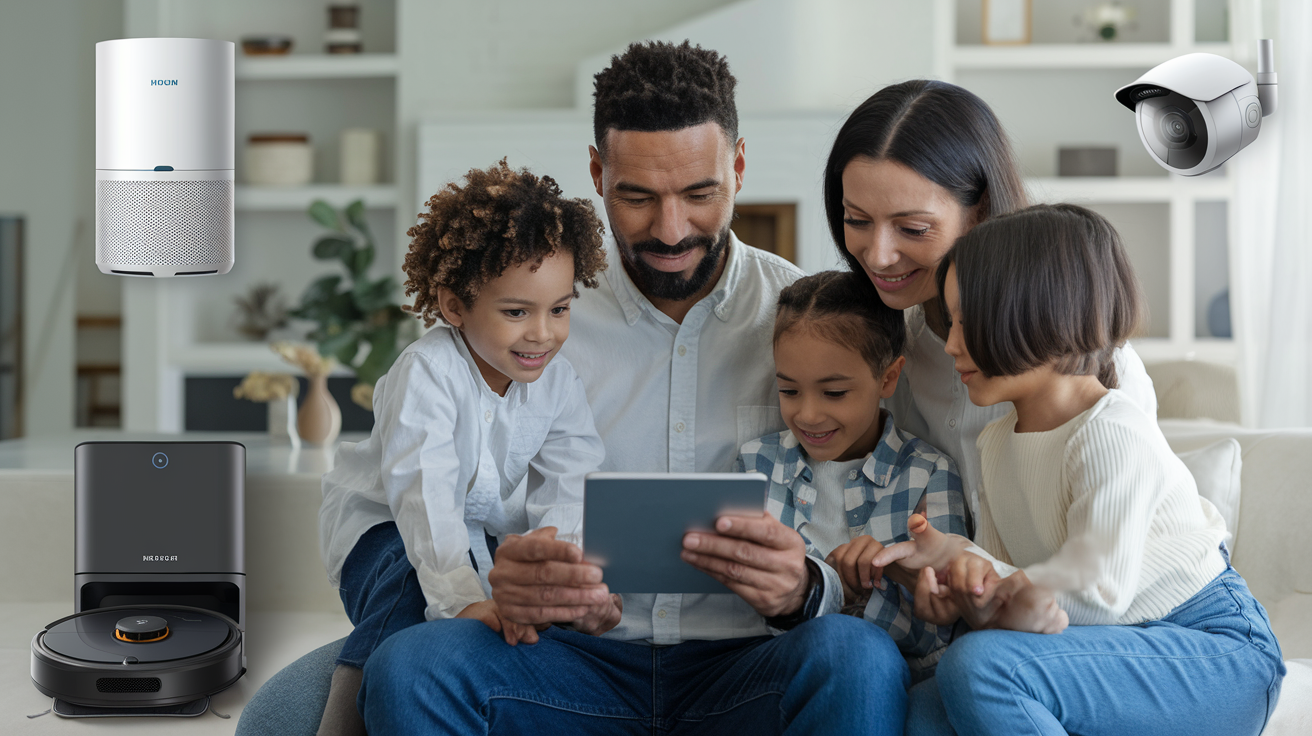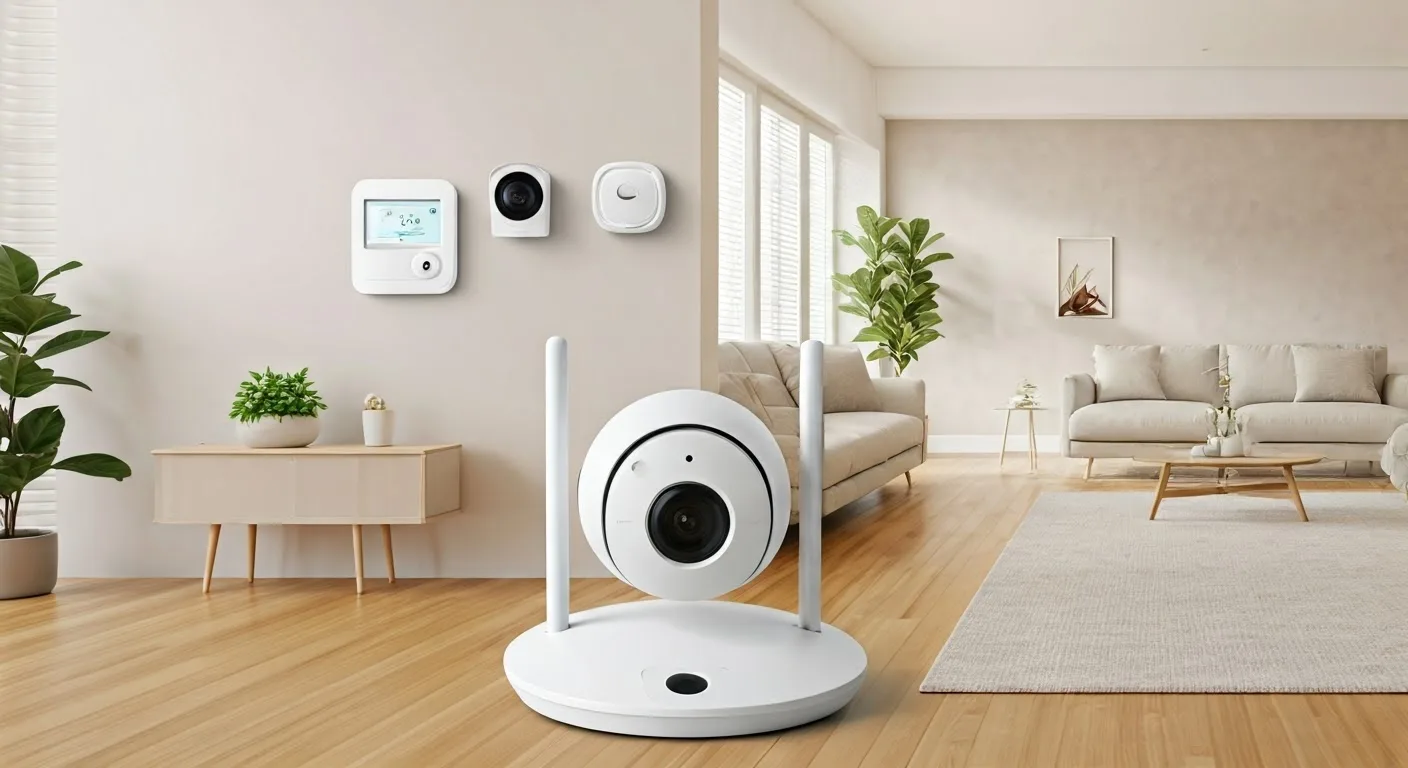In today’s hyper-connected world, children are growing up surrounded by technology. From smartphones and tablets to gaming consoles and social media, the digital age offers incredible opportunities for learning, creativity, and connection. However, it also introduces new risks—cyberbullying, exposure to inappropriate content, online predators, and excessive screen time are just a few concerns parents face. Fortunately, advancements in smart technology provide innovative tools to help safeguard kids while allowing them to explore the digital landscape responsibly. Here are the Top 10 Smart Tech Solutions for Child Safety in the Digital Age, designed to give parents peace of mind and empower children to thrive in a tech-driven world.
1. Parental Control Apps (e.g., Qustodio, Net Nanny)
Parental control apps are a cornerstone of digital child safety. Tools like Qustodio and Net Nanny allow parents to monitor and manage their child’s online activity across devices. These apps offer features such as screen time limits, website filtering, and real-time alerts for suspicious behavior. For example, Qustodio can block harmful content and track social media usage, while Net Nanny uses AI to detect and flag potential risks like cyberbullying or explicit material. By setting boundaries and providing insights into a child’s digital habits, these apps create a safer online experience tailored to each family’s needs.
2. Smart Wearables with GPS Tracking (e.g., Gizmo Watch, Jiobit)
For physical safety in a digital context, smart wearables like the Gizmo Watch by Verizon or the Jiobit tracker are game-changers. These devices come equipped with GPS tracking, enabling parents to monitor their child’s location in real-time via a smartphone app. Some wearables also include two-way calling and geofencing, which sends alerts if a child leaves a designated safe zone. Ideal for younger kids or those who aren’t ready for a smartphone, these gadgets blend safety with independence, ensuring parents can stay connected without being overbearing.
3. AI-Powered Content Filters (e.g., Google Family Link)
AI-driven content filters, such as Google Family Link, take child safety to the next level by dynamically adapting to online threats. Family Link integrates with Android devices to restrict app downloads, filter search results, and set usage limits. Its AI algorithms analyze content in real-time, blocking access to age-inappropriate material while allowing educational resources. Parents can also review activity reports to understand their child’s digital interests, making it easier to guide them toward positive online experiences.
4. Secure Messaging Platforms (e.g., Messenger Kids)
Social interaction is a big part of the digital age, but standard messaging apps can expose kids to risks. Enter secure platforms like Messenger Kids, designed by Facebook specifically for children under 13. This app offers parent-controlled contact lists, fun filters, and games, all within a safe, ad-free environment. Messages are encrypted, and parents can monitor conversations without invading privacy. It’s a smart way to let kids connect with friends and family while minimizing exposure to strangers or harmful content.
5. Smart Home Monitoring Systems (e.g., Arlo, Nest Cam)
Smart home devices like Arlo cameras or Google’s Nest Cam aren’t just for home security—they can also keep an eye on kids’ digital and physical environments. Placed in common areas, these cameras allow parents to check in remotely via an app, ensuring kids are safe while using devices or playing online games. Some models include motion detection and two-way audio, so parents can intervene if something seems off. While privacy is key, these tools offer a discreet way to supervise younger children in shared spaces.
6. Anti-Cyberbullying Tools (e.g., Bark, ReThink)
Cyberbullying is a growing concern, but smart tech is fighting back. Bark uses machine learning to monitor texts, emails, and social media for signs of bullying, harassment, or emotional distress, alerting parents to potential issues. Meanwhile, ReThink takes a proactive approach by encouraging kids to pause and reconsider before sending hurtful messages. Integrated into keyboards or apps, it detects negative language and prompts the user to rethink their words. These tools empower kids to make better choices while giving parents a safety net.
7. Educational Smart Devices (e.g., Amazon Fire Kids Tablet)
Screen time doesn’t have to be a battle. Devices like the Amazon Fire Kids Tablet combine entertainment with education in a child-safe package. Preloaded with age-appropriate apps, games, and books, these tablets come with robust parental controls to limit usage and block unsafe content. The included Amazon Kids+ subscription offers curated, educational material, ensuring kids learn while they play. By turning tech into a positive tool, these devices reduce risks and promote healthy digital habits.
8. Voice-Activated Assistants with Safety Features (e.g., Alexa Kids Mode)
Voice assistants like Amazon’s Alexa have evolved to include kid-friendly modes. Alexa’s Kids Mode filters out explicit content, restricts purchases, and provides age-appropriate responses to questions. Parents can set time limits and review interactions through the Alexa app, ensuring the device remains a helpful companion rather than a gateway to trouble. These assistants also encourage curiosity and learning, answering questions in a safe, controlled environment—perfect for tech-savvy kids.
9. Online Gaming Safety Tools (e.g., Nintendo Switch Parental Controls)
Gaming is a huge part of many kids’ lives, but online multiplayer games can expose them to strangers and inappropriate chat. Platforms like the Nintendo Switch offer built-in parental controls to address this. Parents can restrict online interactions, set playtime limits, and monitor game ratings through a smartphone app. For broader platforms like PlayStation or Xbox, third-party tools like Mobicip extend similar protections. These solutions keep gaming fun and social while minimizing risks from unmoderated communities.
10. Digital Literacy Apps (e.g., Common Sense Media, Be Internet Awesome)
Ultimately, the best defense is knowledge. Digital literacy apps like Common Sense Media and Google’s Be Internet Awesome teach kids how to navigate the online world safely. Common Sense Media offers reviews and guides on apps, games, and websites, helping parents and kids make informed choices. Be Internet Awesome, meanwhile, provides interactive lessons on phishing, password security, and kindness online. By fostering critical thinking and responsibility, these tools prepare kids to protect themselves in the digital age.
Why These Solutions Matter
The digital age is here to stay, and with it comes a dual challenge: harnessing its benefits while mitigating its risks. Each of these smart tech solutions addresses a specific aspect of child safety, from physical tracking to emotional well-being, content control to social skills. Together, they form a comprehensive toolkit that adapts to the evolving needs of families. Parents can mix and match based on their child’s age, tech usage, and independence level, creating a customized safety net.
For younger children, wearables and educational tablets provide a gentle introduction to technology. As kids grow into tweens and teens, parental control apps, anti-cyberbullying tools, and digital literacy programs become essential for managing social media and online interactions. The beauty of these solutions lies in their flexibility—many are scalable, growing with your child while keeping safety at the forefront.
Tips for Implementing Smart Tech Safely
- Start with Communication: Talk to your kids about why these tools are in place. Transparency builds trust and encourages responsible behavior.
- Balance Supervision and Privacy: Use monitoring tools as a guide, not a spy system, especially for older kids who need space to develop independence.
- Stay Updated: Tech evolves fast—regularly check for software updates or new features to ensure maximum protection.
- Model Good Habits: Kids learn by example. Demonstrate healthy screen time and online etiquette in your own tech use.
The Future of Child Safety in the Digital Age
As technology advances, so will the tools to protect our kids. Emerging innovations like AI-driven behavior analysis, blockchain for secure data sharing, and virtual reality safety protocols promise even greater safeguards. For now, these top 10 solutions represent the best of what’s available—combining cutting-edge tech with practical, parent-friendly design.
In a world where digital and physical lives are increasingly intertwined, keeping kids safe requires more than traditional parenting tactics. It demands smart, proactive solutions that leverage technology itself to create a secure environment. By embracing these tools, parents can empower their children to explore, learn, and connect with confidence, knowing they’re protected in the digital age.
Feel safe with the Home Security that you will get from professional security companies are as follows; Contact us at (888) 805-5456 to speak to a specialist and get a no-obligation quote.






